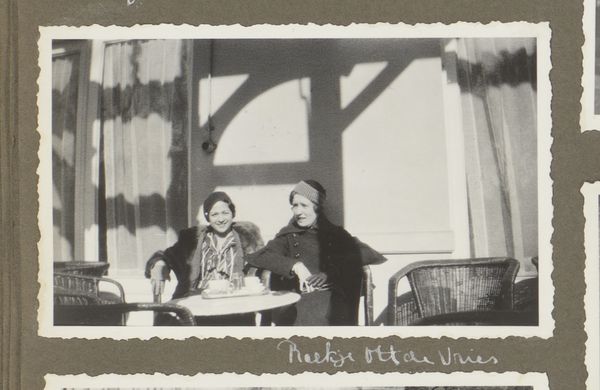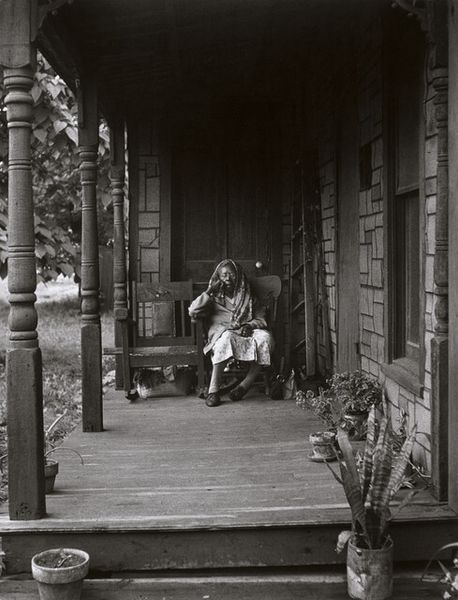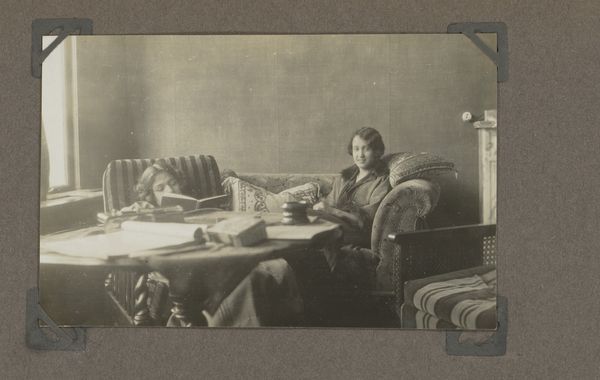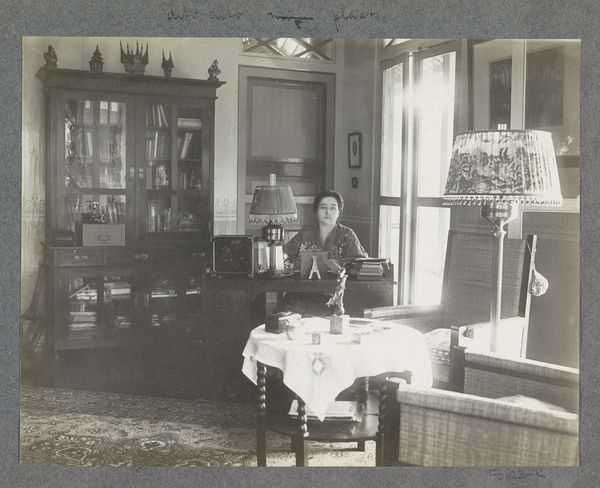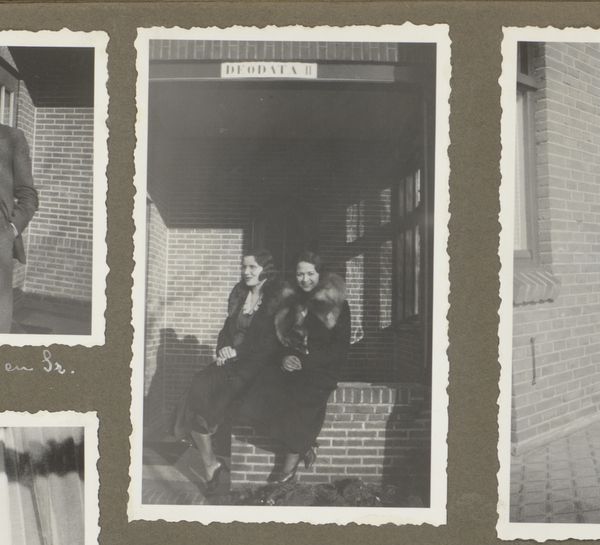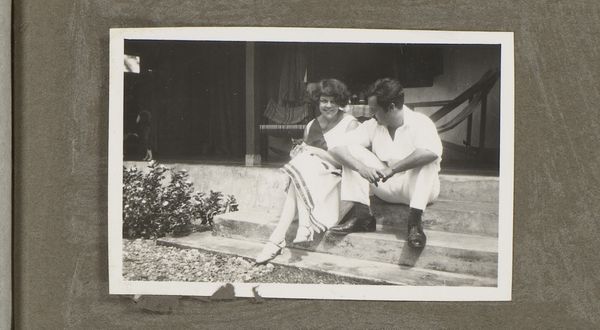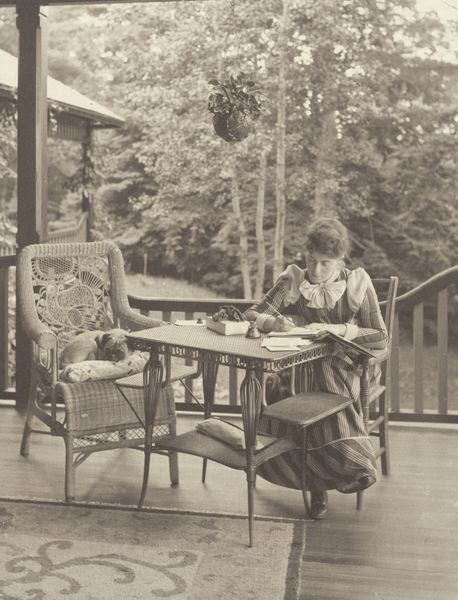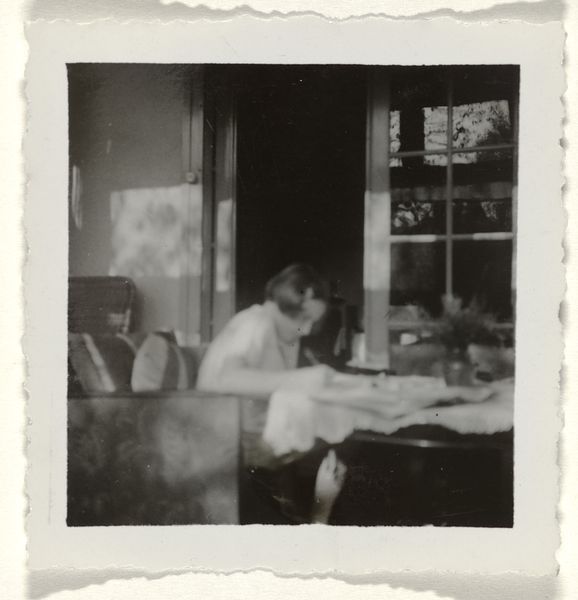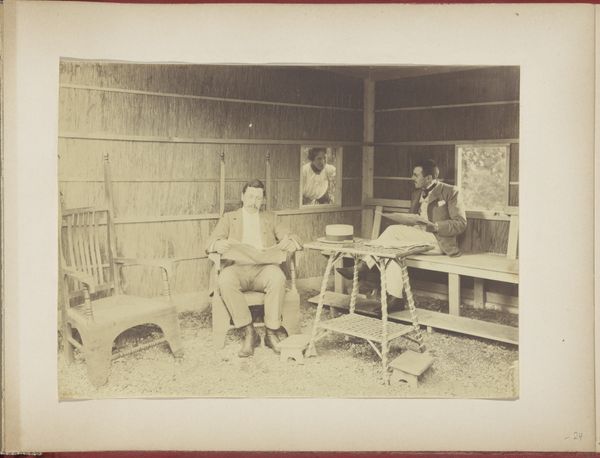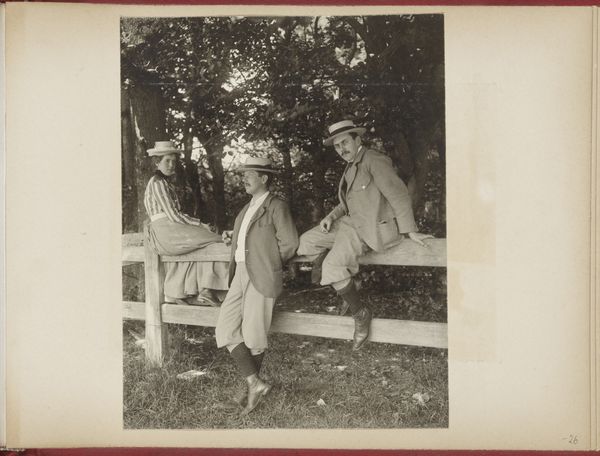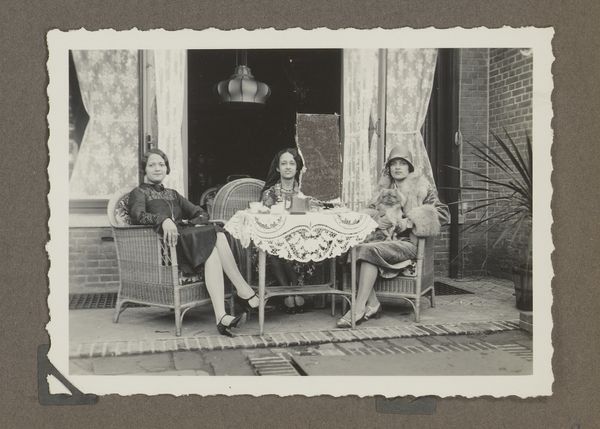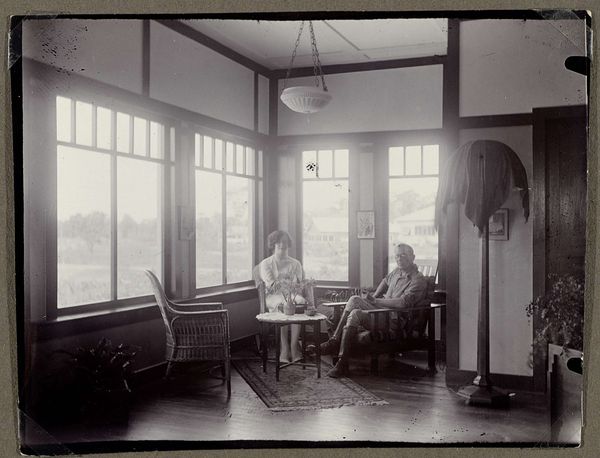
photography
#
portrait
#
pictorialism
#
photography
#
modernism
Dimensions: sheet (trimmed to image): 9.3 x 12 cm (3 11/16 x 4 3/4 in.) mount: 34.2 x 27.5 cm (13 7/16 x 10 13/16 in.)
Copyright: National Gallery of Art: CC0 1.0
Curator: What a quietly powerful scene. Stieglitz's photograph, "Georgia and Ida O'Keeffe," taken in 1924, draws us into an intimate moment of two sisters on a porch. Editor: It feels so intimate and strangely guarded all at once. The shadows, the tight framing... There's an intensity about it. Are they comfortable? Curator: It's compelling to consider Stieglitz's role, both as the photographer and as Georgia's husband. This work comes out of his long project photographing Georgia, positioning her, often, as both muse and subject of artistic experimentation. What does it mean to include her sister, Ida, in this project? What’s produced materially but also emotionally? Editor: He's capturing them, possessing them, isn't he? This pictorialist style...the way the light almost caresses them, and then cuts away, it feels like a selective unveiling. Does that make sense? Curator: Absolutely. And think about the photographic process itself at this time. This isn’t a snapshot from a cell phone. It's about constructing a visual experience in the darkroom. This piece also exemplifies how he blurred the lines between photography and the established art forms of painting and sculpture by hand-manipulating the print to create unique surfaces and textures. Editor: The way the women are positioned - Georgia partially obscured in shadow and what looks like Ida typing away at what appears to be a letter, bathed in direct light... I wonder about their relationship and what that moment held. This reminds me that everyone filters their view based on individual assumptions. The stark, unromantic black and white contrasts that with how we may imagine this iconic, modern painter. Curator: Right. Seeing the two sisters, captured through Stieglitz's particular lens—his love, his ambitions, his engagement with the processes available in 1924–asks us to consider Georgia’s legacy as, also, the product of specific social and material conditions, including a complex network of relationships. Editor: Ultimately, the photograph has that Stieglitz touch – turning life into art with shadow, angle, and emotion. What a thought-provoking look into the lives of Georgia and Ida, both.
Comments
No comments
Be the first to comment and join the conversation on the ultimate creative platform.
